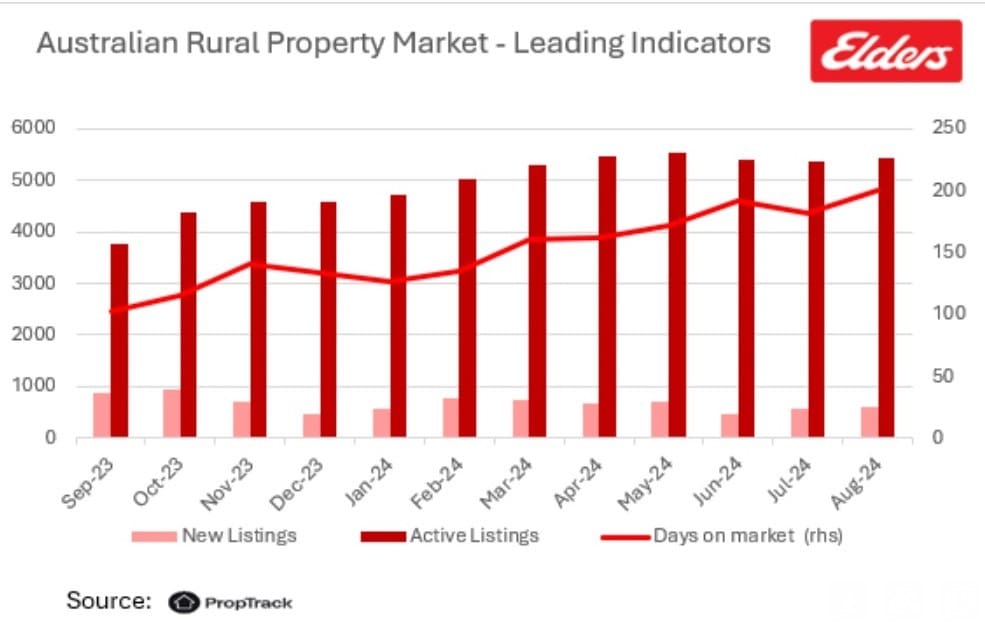
RECENT statistical research by Elders backs up the view that while active property listings have grown over the past 12 months, the buyer pool has diminished and properties are taking longer to transact.
Data gathered by data analytics company Proptrack on rural property listings nationally and published by Elders (see graph above) shows that while new monthly listings have been reasonably steady over the past 12 months (currently around 500/month), ‘active’ listings have risen from about 3800 to 5500 since September 2023. That’s a rise of 45 percent.
Time on market a new metric
Attached to that is a brand new metric that promises to be useful for followers of the rural property market – average days on market has grown from around 120 days this time last year to 190 today – a rise of 58pc.
The data graphed above measures properties of 40ha or larger, across all agricultural land use types. It captures listed properties only – not those that have already been sold.
Elders will provide state-by-state versions of the national graph published above next week, in its next Rural Property Update.
Over time, variations of the data (for example, larger properties only, above say, 250ha or 500ha which would eliminate more intensive horticultural holdings) will be generated.
While the performance varies somewhat from state to state, the trend is similar, Elders business intelligence analyst Richard Koch says.
“We have been working with Proptrak to develop a set of real-time indicators of the rural property market based on real estate website sale listings,” Mr Koch said.
“As you can see from the chart, the indicators are consistent with a cooling market – days on market have almost doubled in the past year, while active listings have stagnated and new listings have fallen,” he said.
“We plan to continue to develop this report further to assist our understanding of the rural property market. I think it is really useful information and can be utilised to structure marketing strategies to take advantage of market dynamics,” Mr Koch said.

Tim Lane, Elders
Elders Queensland/Northern Territory property manage Tim Lane said the results supported the view that the property market has shifted somewhat, with a diminished buyer pool.
“There’s no clear trend in commodity prices at the moment, across the broadacre sectors – things are bouncing around a bit,” Mr Lane said.
“At the end of the day, some buyers are just a little more circumspect presently in terms of their due diligence. They’re not quite sure of which way commodity prices, interest rates, input prices, geo- political tensions and other factors might go. It’s the combination of all of those things that means there’s not quite the same level of confidence we’ve seen earlier.”
“Everyone produces historical sales data on the rural property market, based on settled sales,” Mr Lane said.
“But what we’ve decided to do is to try to define what the forward-looking picture is telling us – what’s on the market, how long it’s been there, and how active the market is at a given time. It’s a snapshot at the end of every month, take from all property listings across the country.”
- Beef Central will publish the state-by-state graphs using the new data in a separate item some time next week.
Data source: Proptrak
